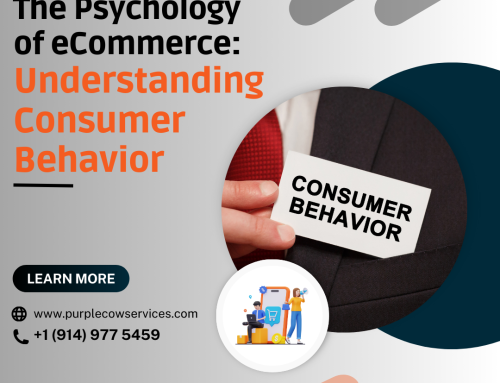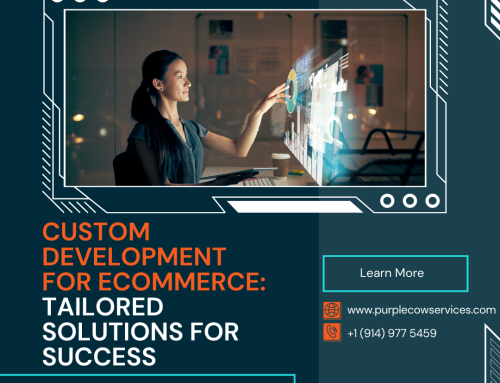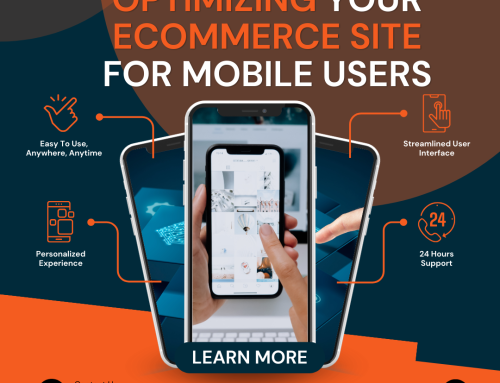In the ever-evolving landscape of eCommerce, businesses are continually adapting to meet the changing needs of their customers. For enterprises, particularly those engaged in B2B (business-to-business) eCommerce, the challenges and opportunities are unique.
Share This Story, Choose Your Platform!
In this article, we will explore key strategies and tips to navigate the complex world of B2B eCommerce successfully.
Understanding the B2B eCommerce Landscape
Before diving into tips for success, it’s crucial to understand the B2B eCommerce landscape. Unlike B2C (business-to-consumer) eCommerce, B2B transactions often involve larger order volumes, longer sales cycles, and complex pricing structures. Enterprises must grasp these differences to tailor their strategies effectively.
Invest in a Robust eCommerce Platform
The heart of any successful B2B eCommerce operation is a robust and scalable eCommerce platform. It should handle high traffic loads, complex catalog structures, and seamless integrations with other business systems, such as ERP (Enterprise Resource Planning) and CRM (Customer Relationship Management) software.
Selecting the right eCommerce platform is akin to choosing a sturdy foundation for a skyscraper. It forms the basis on which you construct the rest of your B2B eCommerce infrastructure. This platform should not only meet your current needs but also scale as your enterprise grows. Look for features such as advanced catalog management, flexible pricing options, and robust order processing capabilities.
Prioritize User Experience
User experience (UX) has been a buzzword in the world of eCommerce for some time, and rightfully so. B2B buyers, just like their B2C counterparts, expect seamless and user-friendly interfaces. However, B2B UX involves its own set of challenges.
B2B customers are typically busy professionals with specific tasks and goals in mind. They require quick and efficient access to product information, account details, and order history. Your website should offer intuitive navigation, personalized product recommendations, and a responsive design that works seamlessly on all devices.
Consider investing in a user experience audit or user testing to identify pain points in your B2B eCommerce site. By addressing usability issues and optimizing the user journey, you can enhance customer satisfaction and loyalty.
Implement Personalization Strategies
Personalization is not limited to B2C eCommerce. B2B buyers also appreciate tailored experiences that cater to their unique needs. Implementing personalization strategies can significantly impact your enterprise-level success.
Start by leveraging data analytics to understand customer behavior and preferences. Then, use this data to offer personalized product recommendations, pricing, and content. You can also segment your customers based on their industry, purchase history, or location to deliver targeted marketing campaigns.
Personalization extends beyond the website; it should encompass all touchpoints, including email marketing and customer support. By demonstrating that you understand your B2B customers and can meet their individual requirements, you’ll build stronger relationships and increase customer loyalty.
Streamline the Buying Process
B2B buyers often make complex purchases. These transactions may involve multiple decision-makers, customized quotes, and extensive product configurations. To succeed in the world of B2B eCommerce, you must streamline the buying process.
Consider offering features like quick order forms, which allow customers to upload bulk orders via a CSV file or enter SKUs directly. These tools simplify the ordering process for buyers who know exactly what they need.
Another critical aspect of streamlining is transparent pricing and shipping options. B2B buyers expect clarity in costs and delivery times. Hidden fees or unclear pricing structures can deter potential customers.
Furthermore, provide detailed product information, including spec sheets, technical documentation, and compatibility charts. This comprehensive approach to product listings helps customers make informed decisions, reducing the need for extensive back-and-forth communication.
Implement Efficient Inventory Management
Effective inventory management is critical in B2B eCommerce. Unlike B2C, where stockouts can lead to lost sales, B2B stockouts can strain relationships and erode trust. To excel in this area, consider implementing the following strategies:
Real-time Inventory Tracking: Ensure your eCommerce platform integrates with your inventory management system, providing up-to-the-minute stock levels.
Backorder Management: If an item is temporarily out of stock, provide clear information on when it will be available or allow customers to place backorders.
Automated Replenishment: For frequently ordered items, offer automated replenishment options based on customer preferences or historical order data.
By focusing on inventory management, you can meet your customers’ expectations for product availability and reliability, enhancing their confidence in your B2B eCommerce platform.
Focus on Mobile Optimization
Mobile devices have become ubiquitous tools for professionals in all industries. B2B buyers are no exception; they increasingly use smartphones and tablets for research, communication, and even making purchase decisions.
To cater to this mobile audience, ensure your B2B eCommerce site is fully optimized for mobile devices. Responsive design is essential, as it adapts the layout and content to various screen sizes. Furthermore, consider mobile-specific features such as touch-friendly navigation, mobile payment options, and a streamlined checkout process.
By prioritizing mobile optimization, you can meet your customers where they are, providing a seamless experience for on-the-go buyers and increasing your chances of capturing mobile-driven sales.
Embrace Content Marketing
Content marketing isn’t just for B2C brands. In the realm of B2B eCommerce, informative and relevant content can play a vital role in attracting and engaging potential customers.
Consider creating content such as:
Product Guides: In-depth guides that showcase the benefits and features of your products can help educate potential buyers.
Industry Insights: Share your expertise by offering insights into industry trends, challenges, and best practices.
Case Studies: Highlight success stories from satisfied customers to build trust and demonstrate your products’ real-world value.
By providing valuable content, you not only position your brand as an industry leader but also establish trust and credibility with potential customers. Remember, in the B2B world, informed buyers are empowered buyers.
Provide Exceptional Customer Support
In B2B eCommerce, excellent customer support can be a key differentiator. B2B buyers often have complex questions, require custom solutions, or need assistance with large orders. Providing exceptional customer support is essential for building and maintaining strong relationships.
Offer multiple support channels, including:
Live Chat: Real-time assistance for quick queries.
Email: A convenient option for non-urgent questions.
Phone Support: Direct access to knowledgeable representatives who understand the complexities of your products and services.
Your support team should be well-trained and equipped to handle inquiries promptly and professionally. Additionally, consider implementing a knowledge base or FAQ section on your website to address common questions and provide self-service options.
Foster Strong Business Relationships
B2B success often hinges on strong relationships. In the enterprise-level B2B eCommerce world, one-time transactions are not enough. It’s about nurturing long-lasting partnerships that benefit both parties.
Invest in relationship-building by: Nurturing Existing Customers: Continuously engage with and provide value to your existing customer base. Offer loyalty programs or incentives for repeat business.
Seeking Feedback: Actively solicit feedback from customers to understand their pain points and areas for improvement.
Customizing Solutions: Tailor your products or services to the specific needs of your clients.
The goal is to become a trusted partner rather than just a vendor. Strong relationships can lead to repeat business, referrals, and collaboration opportunities.
Monitor and Optimize Performance
In the fast-paced world of B2B eCommerce, standing still is not an option. Continuous improvement is key to staying competitive and relevant. Regularly monitor your eCommerce performance using analytics tools to gain insights into customer behavior and site functionality.
Key performance indicators (KPIs) to track may include:
Conversion Rate: Monitor the percentage of site visitors who make a purchase.
Average Order Value (AOV): Analyze the average value of orders placed on your platform.
Customer Retention Rate: Track how many customers return for repeat purchases.
Cart Abandonment Rate: Identify why customers abandon their carts before completing a purchase.
By identifying bottlenecks and areas for improvement, you can optimize your site for better conversions and customer satisfaction. Keep an eye on industry trends and emerging technologies, as staying ahead of the curve can give your enterprise a competitive edge.
Conclusion
B2B eCommerce at the enterprise level is a dynamic and competitive arena. Success requires a comprehensive approach that encompasses technology, user experience, personalization, and customer relationships. By investing in these key areas and staying attuned to industry trends, enterprises can navigate the B2B eCommerce landscape with confidence and achieve long-term success.
In conclusion, B2B eCommerce is not just about selling products; it’s about building lasting partnerships and providing exceptional value to your customers. With the right strategies and a commitment to continuous improvement, your enterprise can thrive in the world of B2B eCommerce. As you embark on your B2B eCommerce journey, remember that it’s an ongoing process of refinement and adaptation, ensuring that you not only meet but exceed the expectations of your enterprise-level customers.
Unlock enterprise-level success in B2B eCommerce with Purple Cow’s solutions. Our tailored strategies, cutting-edge technology, and unwavering commitment to customer satisfaction make us the ultimate partner for your enterprise. Elevate your B2B eCommerce game with Purple Cow today. Stand out from the herd and thrive in the dynamic world of digital commerce.
Share This Story, Choose Your Platform!
In This Blog:

















